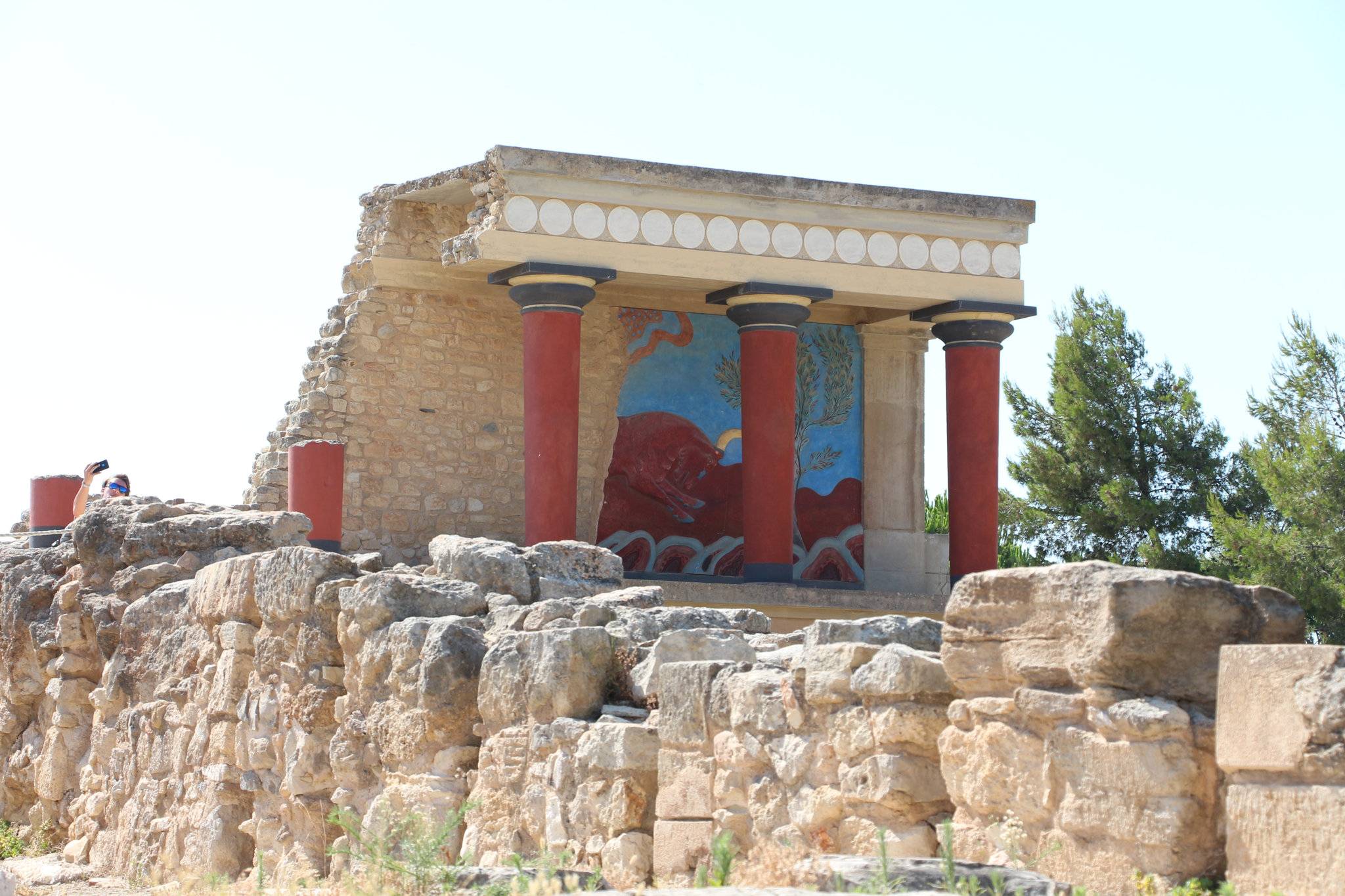The Palace of Knossos on the island of Crete, one of the most significant archaeological sites of the Minoan civilization, is not only a center of culture and politics but also an extraordinary example of ancient engineering. Among its many remarkable features is the discovery of an early flush toilet. This innovation, complete with a wooden seat and a sophisticated drainage system, was far ahead of its time, and it would take millennia before similar technologies were developed again in later civilizations.
The Advanced Plumbing System at Knossos
 At Knossos, the flush toilet was part of an elaborate and efficient plumbing network that displayed the Minoans’ advanced understanding of water management and sanitation. The clay pipes that ran throughout the palace brought fresh water into various rooms, such as bathrooms, kitchens, and fountains, while also removing waste through an intricate system of drains and sewers. In the case of the flush toilet, water was used to wash waste away through pipes, similar to modern-day flush toilets.
At Knossos, the flush toilet was part of an elaborate and efficient plumbing network that displayed the Minoans’ advanced understanding of water management and sanitation. The clay pipes that ran throughout the palace brought fresh water into various rooms, such as bathrooms, kitchens, and fountains, while also removing waste through an intricate system of drains and sewers. In the case of the flush toilet, water was used to wash waste away through pipes, similar to modern-day flush toilets.

The toilet was strategically positioned in a private room and designed to take advantage of gravity, ensuring that the waste could be easily carried through the pipes to cesspits or, in some instances, might have been channeled toward the sea. The drainage system that spread across the palace was crucial in preventing waterlogging, and it managed both waste and stormwater. This sophisticated system illustrates the Minoans’ remarkable engineering prowess and their ability to integrate such systems into the daily life of their palace.
Plumbing Innovations and Hygiene
In addition to the flush toilet, the Minoans at Knossos also developed other plumbing innovations that were far ahead of their time. The palace featured bathrooms equipped with bathtubs, wash basins, and an extensive system of fountains, all connected to the palace’s water supply network. This network was fed by a well-established aqueduct system, which brought fresh water from distant sources to ensure a constant flow of water for daily use.

This early integration of hygiene and sanitation into the design of the palace speaks to the Minoans’ advanced approach to urban planning. They not only provided amenities for comfort and cleanliness but also established a system that allowed for easy access to water and proper waste disposal, highlighting their sophisticated understanding of public health—long before such concepts were widespread in other ancient societies.
A Lost Innovation
The Minoans’ impressive plumbing system, however, did not endure indefinitely. After the decline of the Minoan civilization around 1450 BCE, much of their technological knowledge, including their advanced plumbing, was lost. The palace at Knossos was abandoned, and over time, the once-innovative plumbing systems fell into disrepair. For centuries, similar innovations in plumbing were not seen again in the Western world.
It wasn’t until the rise of the Roman Empire centuries later that plumbing technology began to reemerge. The Romans, famed for their own advanced infrastructure, including aqueducts and sewer systems, likely drew inspiration from earlier Minoan innovations. The groundwork laid by the Minoans helped influence Roman engineering, and many of their ideas in urban planning and water management were built on those pioneered at Knossos.
A Legacy of Innovation
Today, the flush toilet and drainage systems at Knossos stand as a testament to the ingenuity of the Minoan civilization. These early plumbing innovations not only demonstrate the Minoans’ technical expertise but also their ability to integrate complex systems into the daily life of their society. Their focus on cleanliness, water management, and urban planning laid the foundation for modern plumbing systems.
The legacy of the Minoans lives on in the systems we use today, reflecting the enduring influence of their advanced technological achievements. By creating efficient and sustainable water management systems, the Minoans were ahead of their time, and their innovations helped shape the course of history. The Palace of Knossos remains an enduring symbol of ancient engineering, where the brilliance of the Minoan civilization continues to inspire and inform our understanding of early technological progress.
